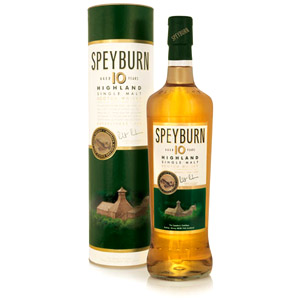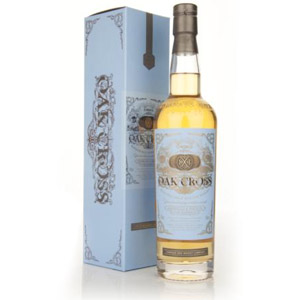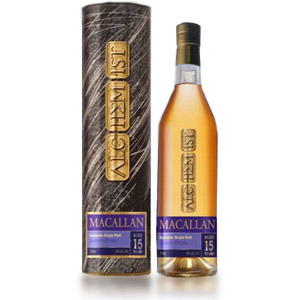Oof. This one is painful. I’m not a big consumer of Japanese whisky, mostly because the international fervor and subsequent pricing mania for Japanese whisky struck before I got into it. If I wasn’t buying Yamazaki and Nikka at $40 I’m definitely not buying them above $100. I do have a soft spot for the now-discontinued Hibiki 12 year (and the 17 year, which is even better), but in general my brief forays into Japanese whisky haven’t been very exciting.
So when my favorite retailer, David Driscoll, sung the praises of a new Japanese whisky to hit the US market with a trick to keep prices in check (yes, $70 is “in check” for Japanese whisky), I was sold. I was doubly sold when I learned that the whisky had been aged in that most legendary of oak species: Japanese Mizunara Oak.
First, the specs: Kaiyō is a “negotiant” (independent bottler) from Hong Kong that purchases barrels of aged or unaged whisky from Japanese producers and matures and bottles them under the Kaiyō label, much like Gordon & MacPhail or Alexander Murray. In this case, the barrels are single malt whisky from an unnamed Japanese distillery that have been “teaspooned” with whisky from another distillery. In other words, a technical “blend”. This is a fairly standard industry practice in Scotland and elsewhere and is done as a legal precaution to protect the name (and reputation) of the original distiller. This is why the Kaiyō bottle label says “Whisky” not “Single Malt Whisky”.
There’s no age information available. All we know is that the whisky was aged in Mizunara oak barrels from Ariake and then finished maturation for “up to 3 months” on a boat somewhere, like those Jefferson “Ocean Aged” boondoggles. The fact that the whisky was not aged 100% of the time in Japan is the reason “Japanese whisky” doesn’t appear on the label. This, plus the teaspooning, is what purportedly keeps the price low, relatively speaking.
The Internet has a lot of fascinating conspiracy theories about the origins of Kaiyō (this is a particularly well-researched one, which also suggests the whisky is aged for 3 years in Mizunara before its ocean voyage). The brand has a future, as well: a distillery building is in the works. I would be more interested in digging into this kind of mystery if I liked the whisky… at all.
Kaiyō Mizunara Oak is not chill-filtered and bottled at 43% ABV. There is also a cask-strength version.
Nose: Rotting wood, wet moss, engine grease, burnt caramel without the sweetness. A rest in the glass does not improve the situation. There isn’t even the barest hint of sandalwood, but if you’re a fan of noxious incense that smells like burning rubber then yes, this probably smells like incense.
Palate: Medium body. Mild tongue burn (hotter than expected for 43% ABV). This tastes very much like bottom-shelf cheap blended Scotch whisky, with a top note of burning tires and acetone.
Finish: Unmercifully long. The primary flavor is vodka, the cheap kind. This is awful.
With Water: A few drops of water amp up the nose tickle, but fix nothing. A rest in the glass, however, adds a perfumed floral note that is welcome, but cannot by itself save this whisky. If you are cursed with a bottle of this and cannot give it away, I suggest waiting until you are good and drunk already, adding a small splash of water to a glass, letting it sit for 5 to 10 minutes, and then attempting to enjoy it.
Overall: Oh God I wanted to like this, I really did. I gave it several tastings spread across several weeks in the hope that it would grow on me. It didn’t. It’s vile. It bears no resemblance to my (admittedly distant) memory of Mizunara oak. It contains no notes that even come close to sandalwood. It tastes exactly like I would expect a grocery-store label of $10/liter blended scotch to taste, if it had been contaminated by motor oil. Without a doubt the worst use of $70 ever. I finally managed to rid myself of the bottle by hand-blending it with some leftover peated single malt scotch, which covered up some of the worst offenses.
I sincerely hope David never sees this review. Normally his tastes and mine align. Perhaps I got a bad bottle. Perhaps some quirk of the whisky made it “turn” while sitting on my shelf before I opened it. Whatever it is, these are the risks we take when we buy whisky. Thank goodness I can count the number of truly “bad” bottles I’ve bought on one hand.









I’m with Dave on this one. I loved it.
Nice review… I’ve been suspicious of all of these new “Japanese Whiskies” that popped up all of a sudden in the wake of Suntory’s success. I do enjoy the Yamazaki 12 more than you do, but not at or near the $125 it commands now. Their 18 year, however, is one of my favorites in the “balanced” category of whiskies.
Not saying it was the best whiskey ever but the bottle I drank didn’t smell or taste they way you described, maybe you did in fact get a bad batch, or maybe they started using different juice then when I tried it two years ago. As a reference between our comparative palates I totally agree that bank note (regular) is great for the money, but totally disagree about Legent, which I really disliked. Lastly I used to buy Yamazaki, Hibiki and Hakushu when the were priced at 40-60$ and would never ever buy them at their current 150$+
Thanks for the comment, Mike. Judging by the wide range of reviews of Kaiyo that I’ve seen online, I think the issue is batch variation. I don’t think they have a consistent product (or, perhaps, consistent source). Also possible is that because it’s famously difficult to work with Mizunara oak, the barrels could be causing quality variations. Yet another reason for brands to improve their quality controls AND be a lot more transparent about batch information.
I was gifted a bottle and I’d say your review is pretty spot on. This taste like slightly aged moonshine or vodka thrown into a oak barrel for a short length of time. There is a floral note which is pleasant after a few minutes and water, as you found also. I currently don’t have anything open I’d want to waste by mixing and trying to redeem this.